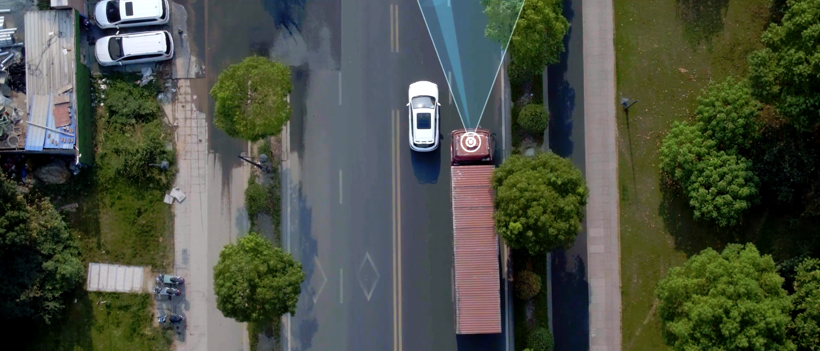Advanced Driver Assistance System(ADAS)

Advanced driver-assistance systems (ADAS), are electronic systems that help the vehicle driver while driving or during parking. When designed with a safe human-machine interface, they are intended to increase car safety and more generally road safety. ADAS systems use electronic technology such as microcontroller units (MCU), electronic control units (ECU), and power semiconductor devices.
Most road accidents occur due to human error. Advanced driver-assistance systems are systems developed to automate, adapt and enhance vehicle systems for safety and better driving. The automated system which is provided by ADAS to the vehicle is proven to reduce road fatalities, by minimizing the human error. Safety features are designed to avoid collisions and accidents by offering technologies that alert the driver to potential problems, or to avoid collisions by implementing safeguards and taking over control of the vehicle. Adaptive features may automate lighting, provide adaptive cruise control and collision avoidance, pedestrian crash avoidance mitigation (PCAM), incorporate satnav/traffic warnings, alert driver to other cars or dangers, lane departure warning system, automatic lane centering, show what is in blind spots, or connect to smartphones for navigation instructions.
With the help of sensors, ADAS collects first-hand data inside and outside the vehicle, identifies dynamic and static objects, and is capable of object detection and tracking. In this way, ADAS enables drivers to detect potential risks in the shortest time and helps prevent traffic accidents from occurring.
In the early stages, ADAS functioned by using passive alarms. As the science and technology advanced, ADAS is now able to take preventative precautions, thus further preserving driver safety. In order to lower the accident rate, ADAS technology may be a standard implementation for vehicles in the near future.
After years of exploration and investment,aidriving has made remarkable achievements in ADAS technology, and supports a comprehensive suite of ADAS functions: forward collision warning, headway monitoring warning, urban forward collision warning, lane departure warning and pedestrian collision warning. Most functions mentioned above are unique to AIdriving.
1.Forward Collision Warning
The forward collision warning (also known as FCW) system determines potential risks by sensing and calculating the relative headway distance between the user vehicle and the vehicle ahead, as well as calculating the relative speed of the vehicle when it is driving at a higher speed. Forward collision warnings are given once the potential collision risk is detected.
2.Headway Monitoring Warning
The headway monitoring warning (also known as HMW) system monitors headway time by sensing and calculating the headway distance between the user vehicle and the vehicle ahead, as well as calculating the absolute speed of the vehicle in real time. When the headway time (the unit is in seconds) is less than the threshold alarm time configured in the system, an alarm will be immediately generated for the driver, reminding him to maintain a safe following distance and ultimately avoid a rear-end collision.
3.Urban Forward Collision Warning
The urban forward collision warning (also known as UFCW) system predicts possible low-speed collisions by calculating the headway distance between the user vehicle and the vehicle ahead, as well as by calculating the speed in real time when the vehicle is driving at a low speed (UFCW usually works when the speed ranges from 0 to 30 km/h). An alarm is immediately generated once an imminent low-speed collision is detected.
4.Lane Departure Warning
The lane departure warning (also known as LDW) system senses road conditions ahead via the ADAS algorithm, then determines whether or not there is a lane departure and promptly sends a warning to the driver. The lane departure warning is given to the driver when he departs from the original lane unconsciously (without using the turn signal), thereby preventing possible traffic accidents resulting from sudden lane departure.
5.Pedestrian Collision Warning
The pedestrian collision warning (also known as PCW) system detects pedestrians and riders in front of the user vehicle. The system makes comprehensive decisions according to vehicle speed and the distance between the vehicle and detected pedestrians, then provides an alarm to drivers immediately if there is a high potential for a crash, thereby preventing possible pedestrian collisions.
AIDRIVING has two core competitive edges in ADAS technology thanks to years of experience: independent intellectual property rights and a database of abundant video footage. We have enriched ADAS functions and obtained several patents for innovation through independent research and development, basically mastering all ADAS key technologies based on image identification.
At the same time, AIDRIVING is strongly capable of acquiring vehicle data. It also conducts highly targeted R&D tests for analyzing driving habits and complex road conditions.AIDRIVING has established a database of road conditions and objects by collecting a vast amount of data in various weather and lighting conditions. We have also acquired data of millions of images for manual annotation, training the algorithm to become more accurate and user-friendly, and bolstering the effectiveness and convenience of the technology.

